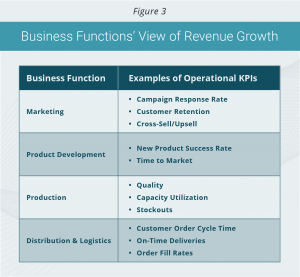— April 17, 2019
When you see a job posting, what catches your eye? The salary? 401(k) benefits? New-age perks like ping-pong tables?
If you think compensation or benefits are what matter most in a first job, consider the reasons why workers say they love what they do. When HR provider Virgin Pulse surveyed U.S. and Canadian employees on the subject, 53 percent of them—more than any other reason—cited interesting and challenging work.
For obvious reasons, “challenging” isn’t a term most employers use to describe their company culture. But here are a few signs jobseekers can look for that signal a company provides interesting, challenging work:
- A flair for feedback
If you’re like most Millennials, you crave feedback but don’t feel comfortable asking for it. A Gallup survey revealed that 19 percent of the demographic say they regularly receive feedback, but just 15 percent strongly agree that they routinely request it.
Plenty of companies talk up a culture of feedback, but few are as free with it as they purport to be. To cut through the spin, check out content by the company’s everyday employees. Workers at feedback-forward companies like Credera can call out multiple processes — formal and informal; top-down and bottom-up—by which they receive and share feedback. - A diverse portfolio
Should you find a niche and stick to it, or should you try to build a broad base of experience? Although many companies choose the former, workers seeking new and interesting challenges should shoot for the latter. No matter the task, repetitive work is neither interesting nor challenging.
Look at a potential employer’s case studies for signs of corporate innovation. Is there industry crossover? How widely scoped is the work itself? Look, too, for broad backgrounds on the leadership team. Do the company’s leaders all hail from the enterprise world, or do they have expertise that signals they’re interested in new challenges? When you meet with the teams, ask them what their plans are for the future. What are they doing to diversify their teams and portfolio? - Engagement with external content
When you’re fresh out of school, it’s tempting to select an employer that seems to have it all figured out. Established processes, confident leaders, and an internal focus are understandably appealing at the entry level.
Be careful, however, not to confuse confidence for obstinance. Companies that refuse to change as the industry evolves are unwilling to challenge themselves and, by extension, their employees. Watch for signs on social media and company blogs that the firm is listening to the industry’s thought leaders. Recruitment platform Monster periodically publishes content about employment bloggers they’re following on Twitter, for example. - Transitional support
Here’s a secret you won’t hear from most employers: Few roles take more than a year to master. Although you could camp out in a role you’re already familiar with, where’s the challenge in that? Your remaining options are convincing your employer to help you transition to another role or picking up stakes to go somewhere else entirely.
To predict whether a company will support your growth, check two places: First, the LinkedIn profiles of other members of the team. Do you see a single role, or have they held a couple at the same employer? Second, the business’s benefits. Employers that help crush employees’ student debts tend to attract high achievers and boost the well-being of employees, both personally and professionally. - Conference hosting
Not all employers have the space or other resources to host hundreds of people. With that said, companies that physically open themselves to members of other firms tend to be the movers and shakers of their sector. They realize that exposure to new ideas and perspectives is more important to long-term growth than any internal project or single sale ever could be.
Many corporate conferences, however, are little more than marketing plays. To find out whether a company is serious about theirs, look for nice-to-have elements like media partnerships, top-tier speakers, and direct mail reminders. The presence of those factors can indicate that a company is willing to invest not just in itself, but in the development of others.
Nap rooms and ping-pong tables may make an employer look cool, but they alone can’t keep employees happy. In fact, it tends to be the cultural factors that stand out the least on paper that matter most.
Business & Finance Articles on Business 2 Community
(32)







